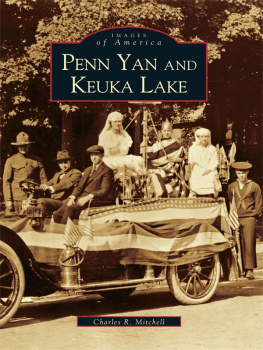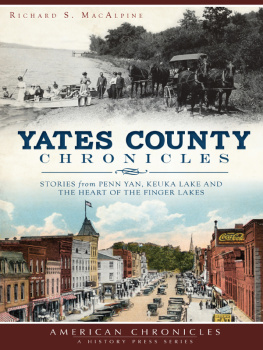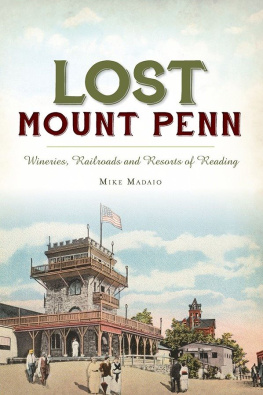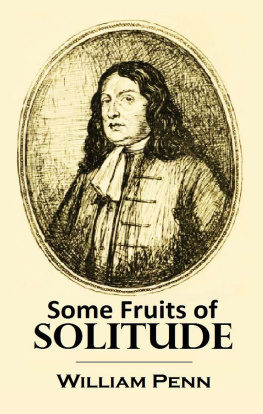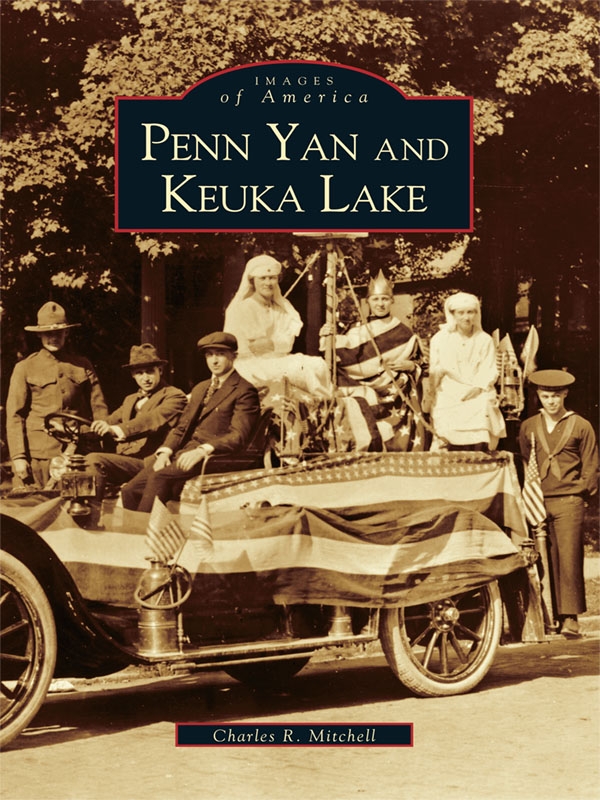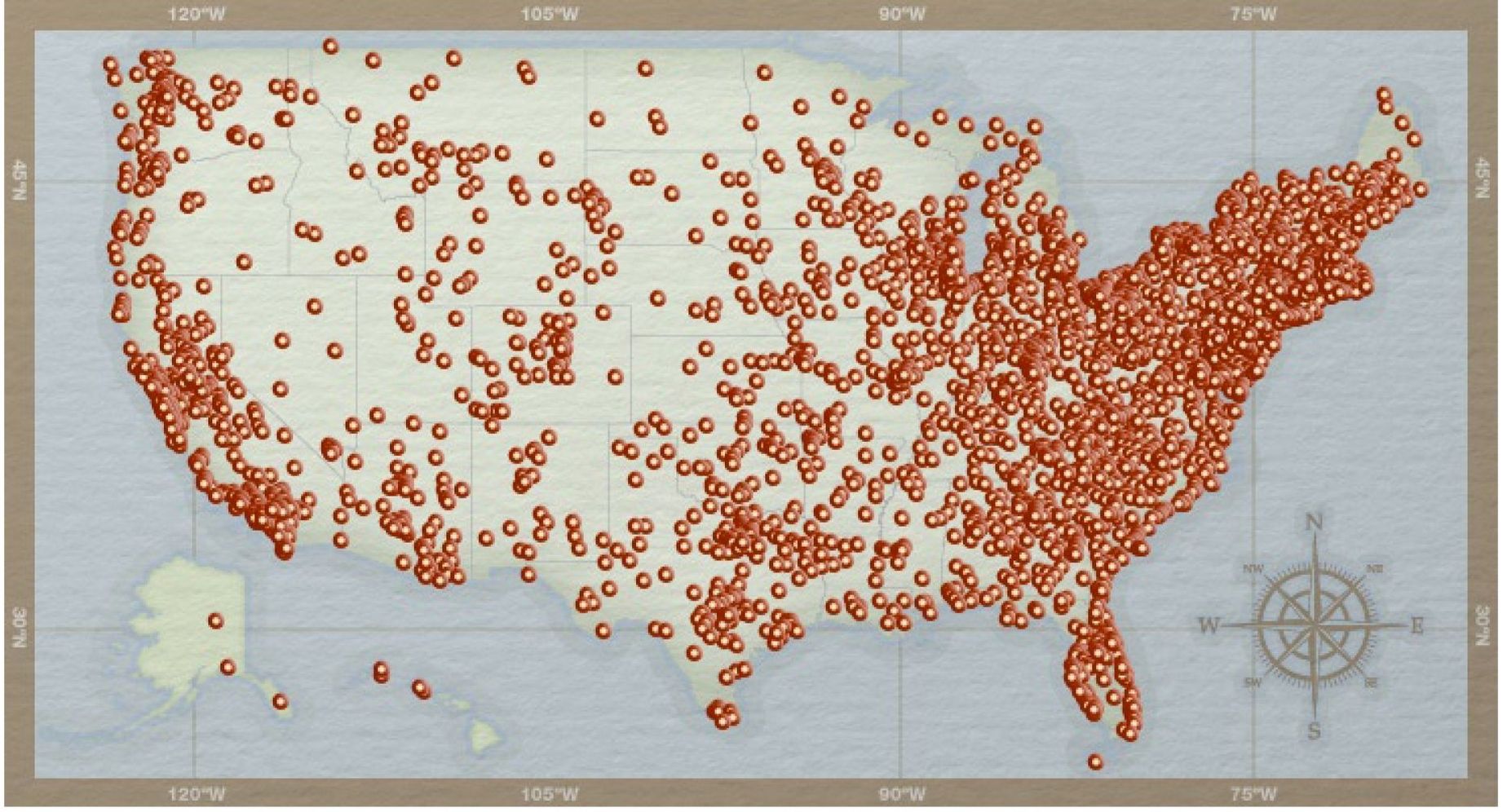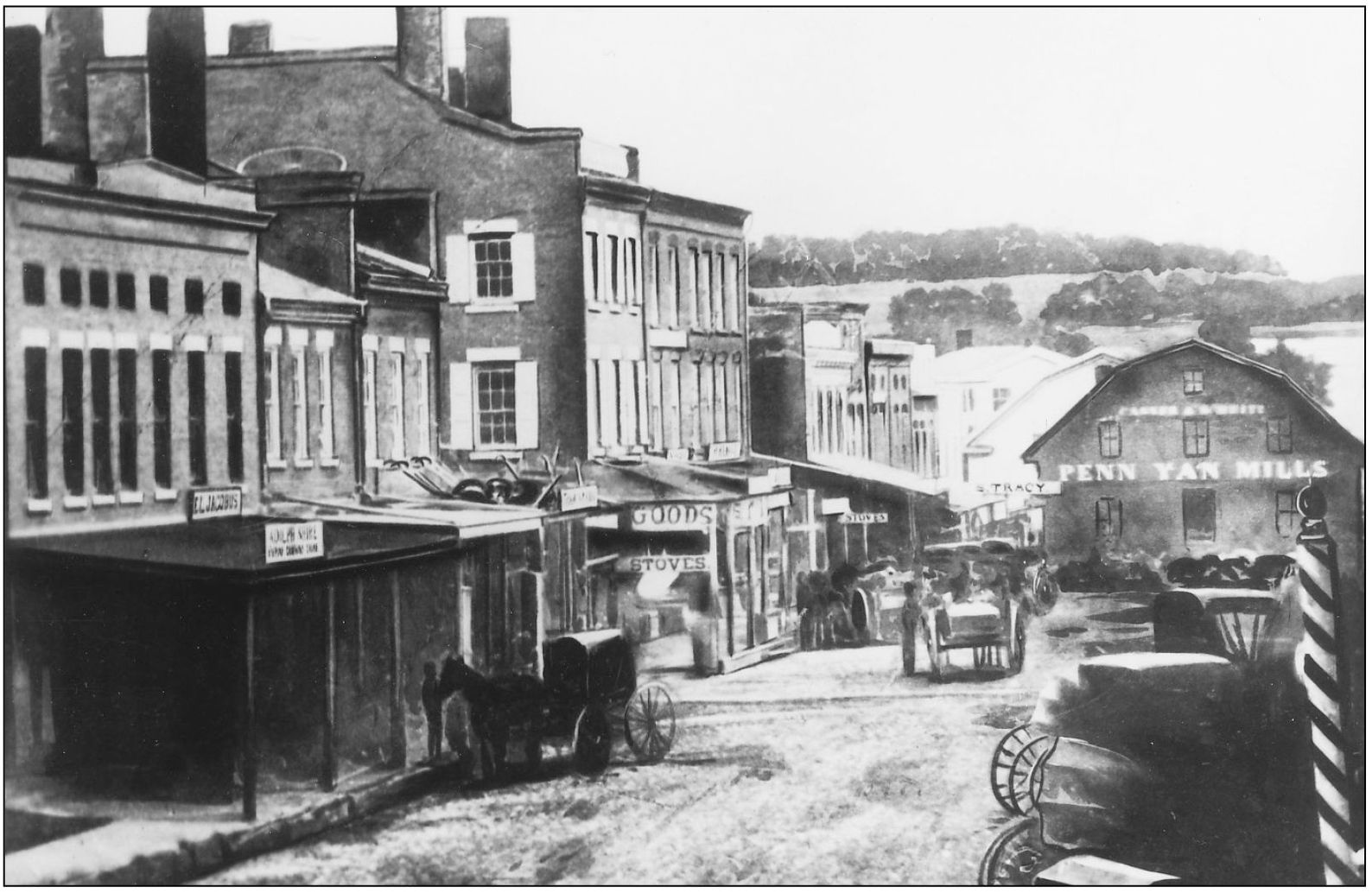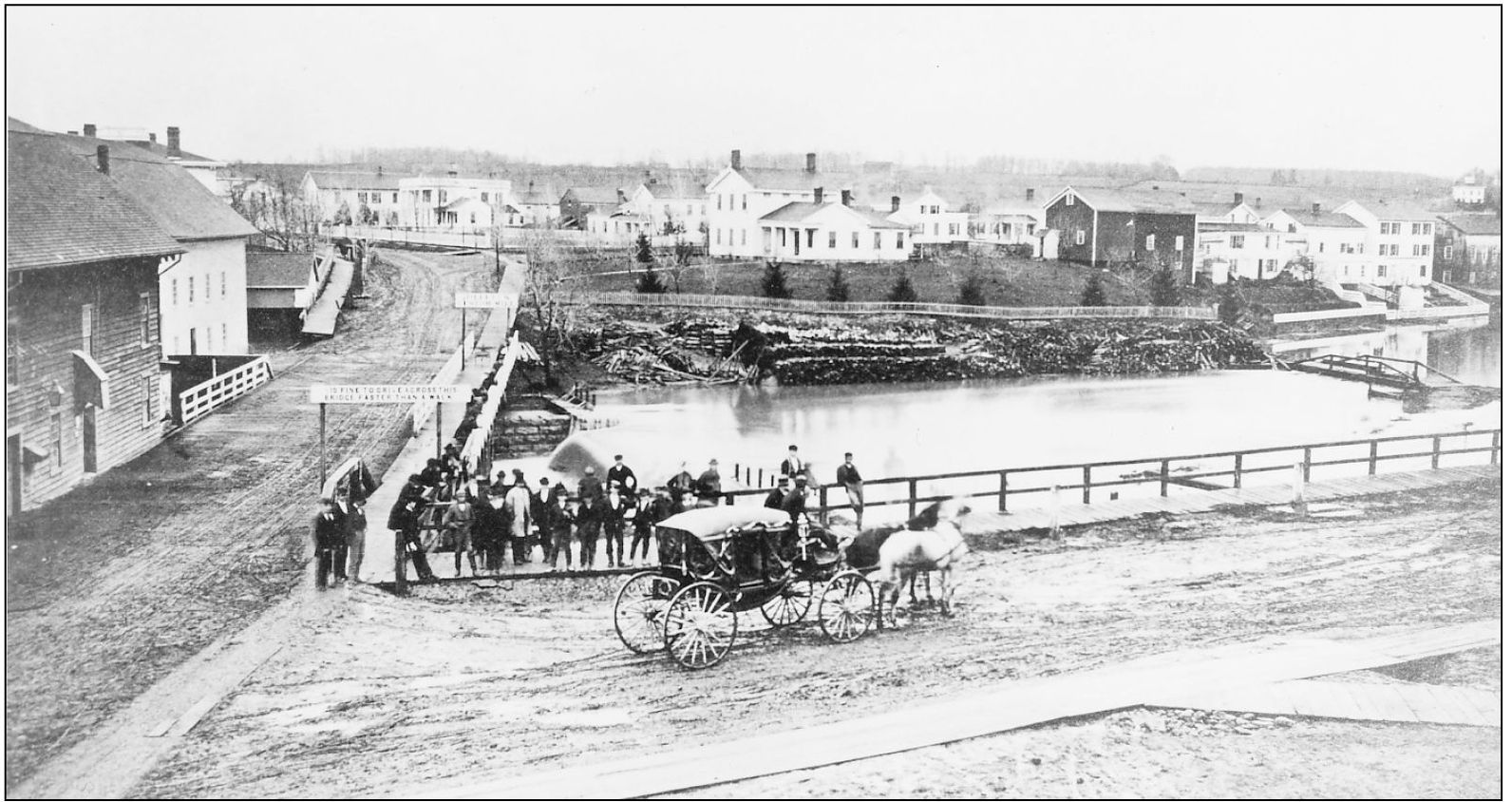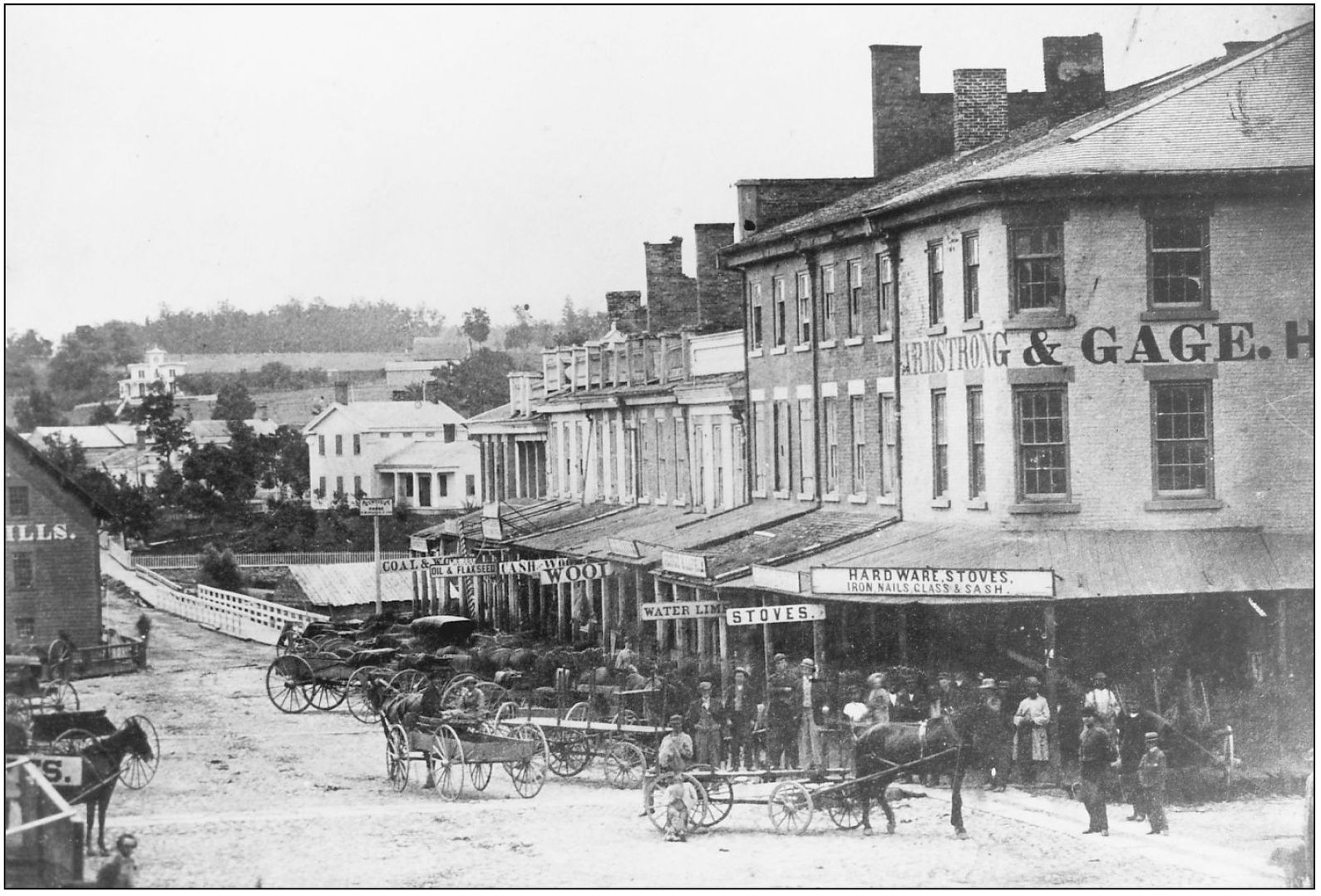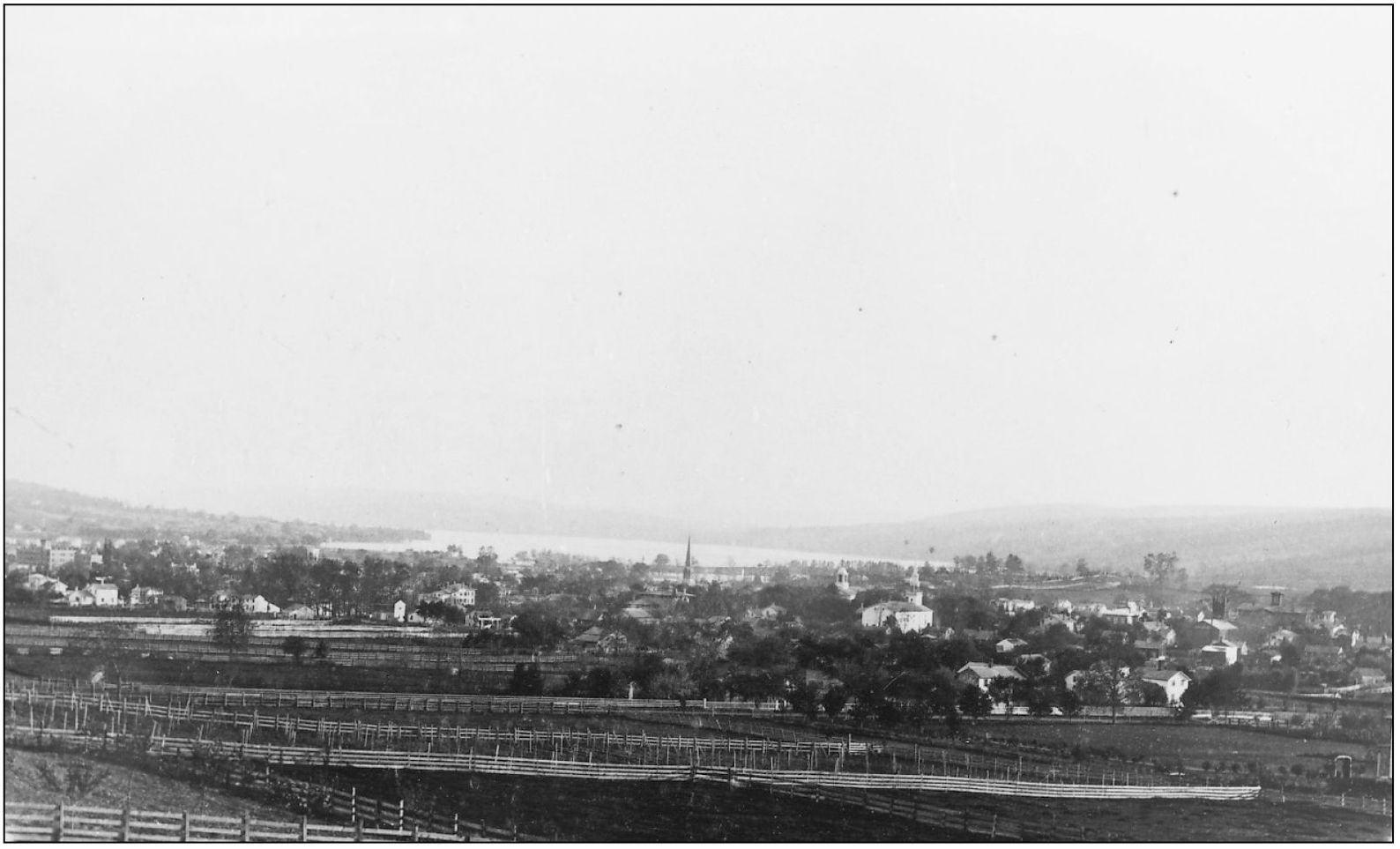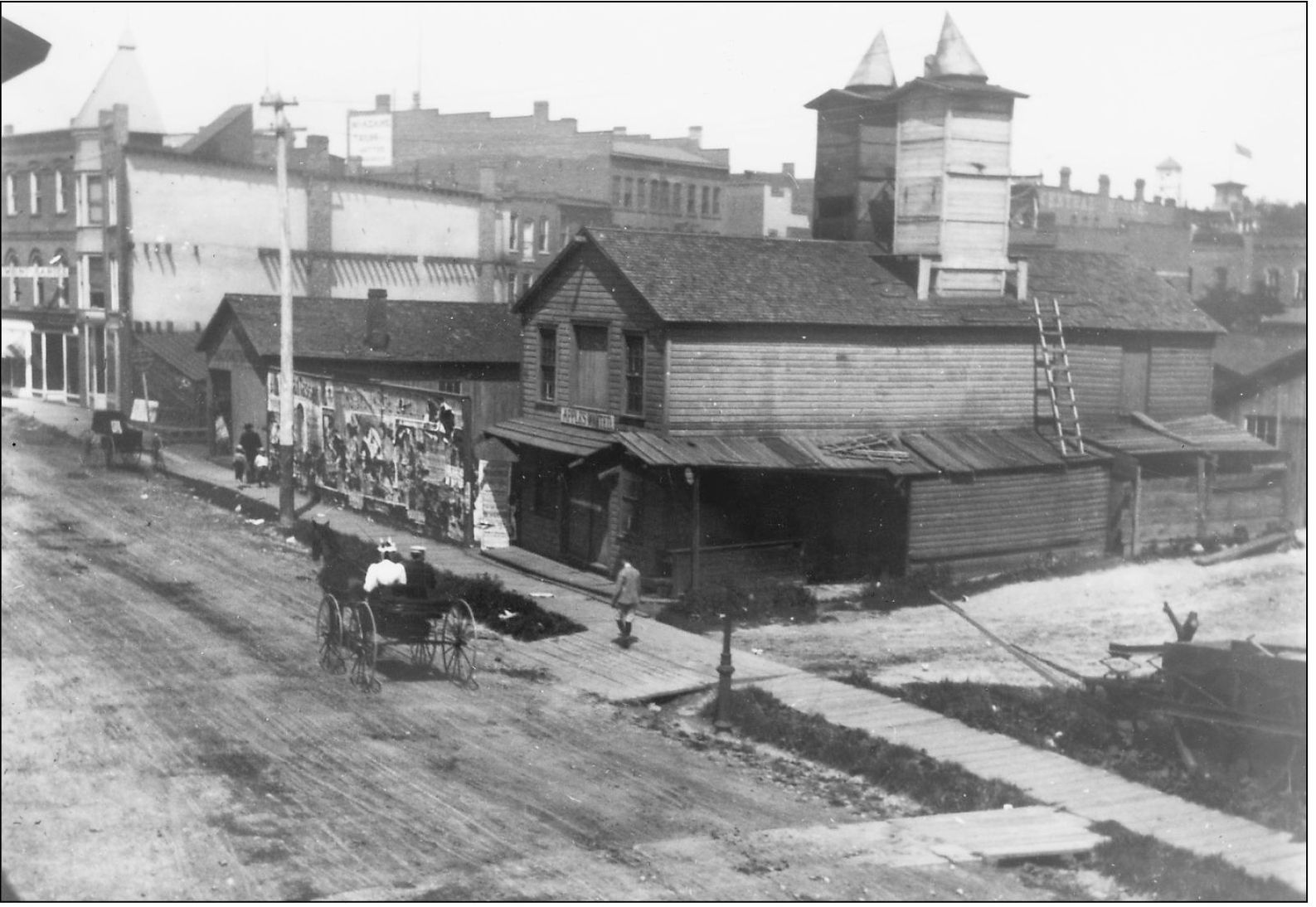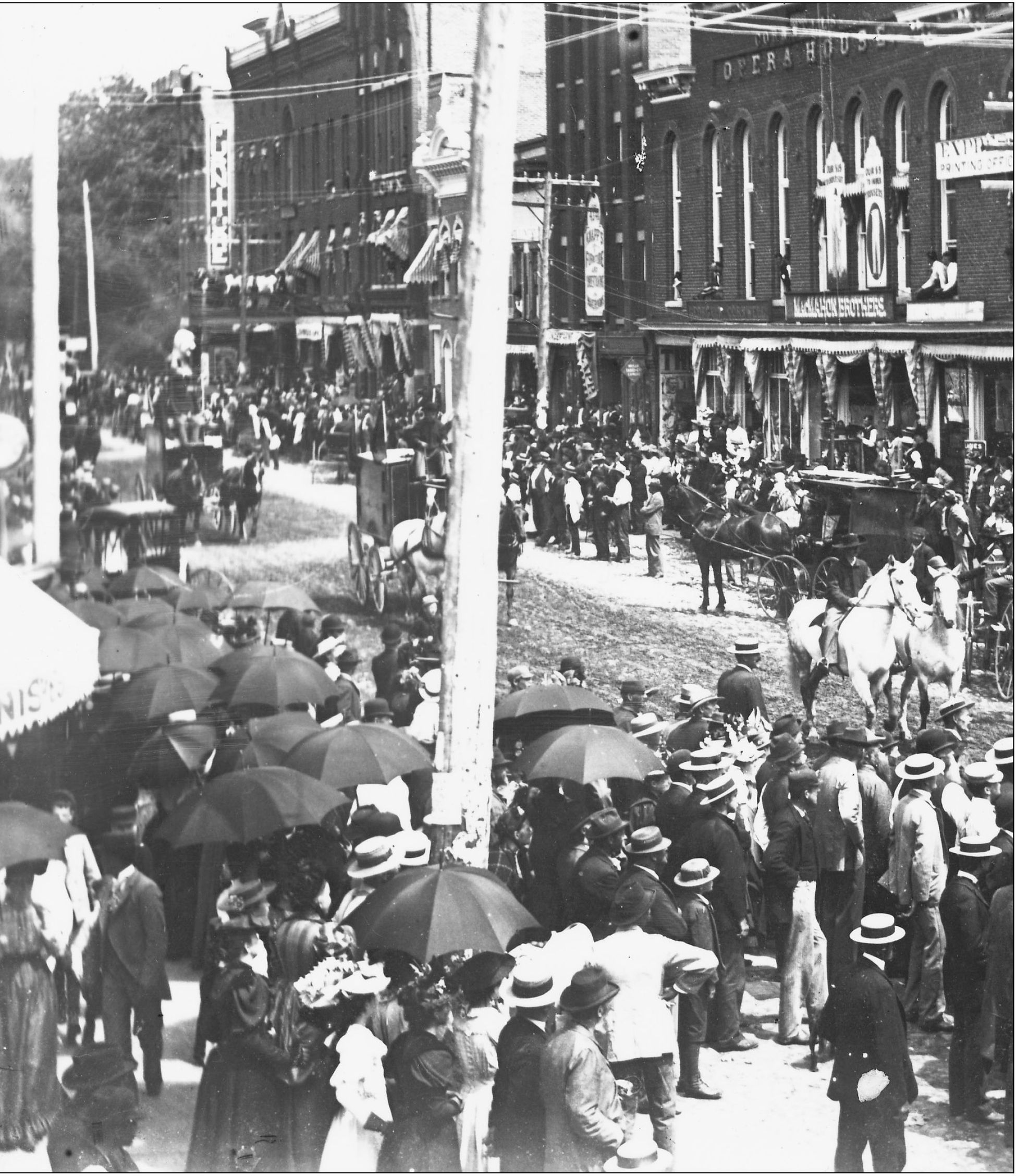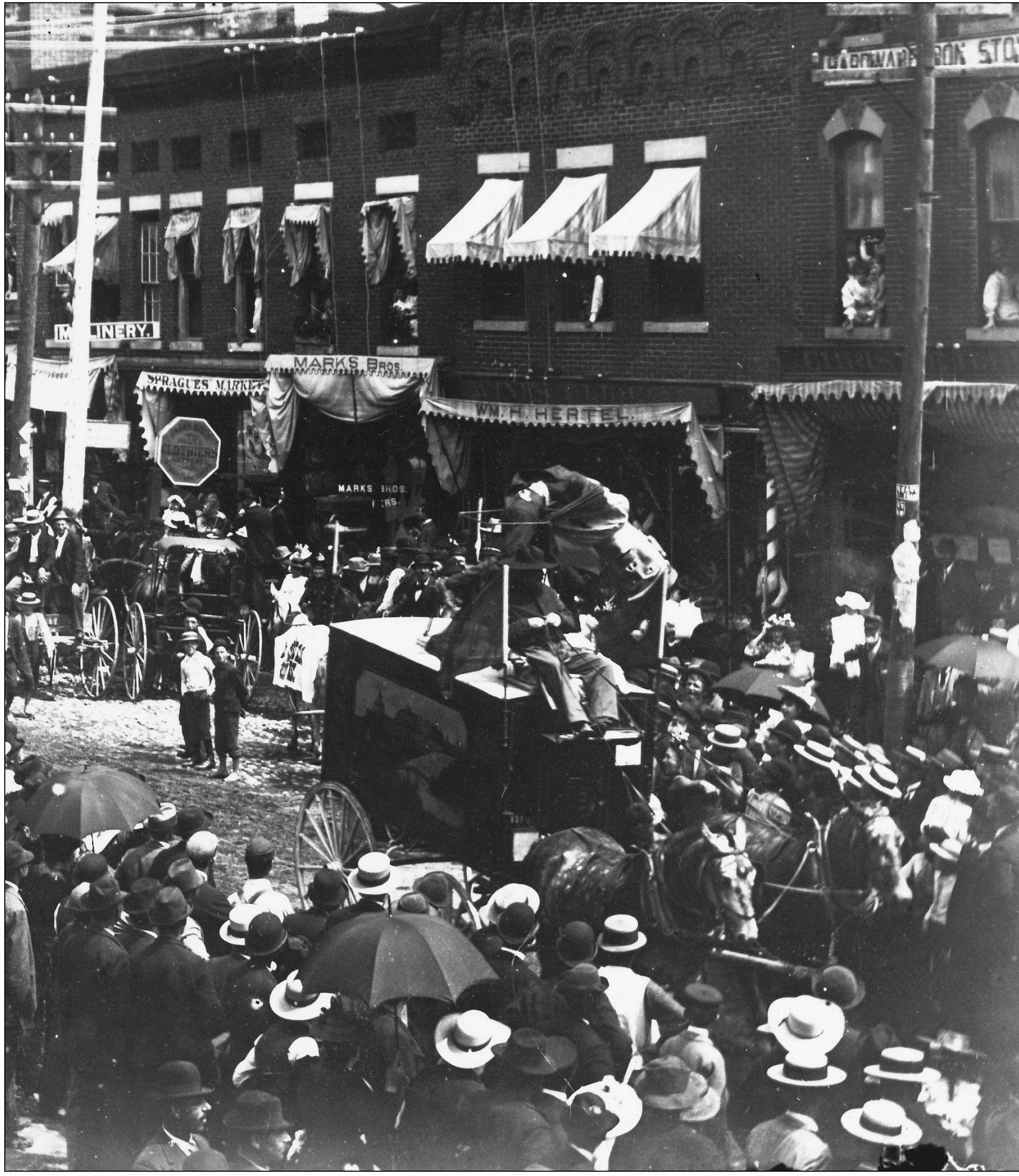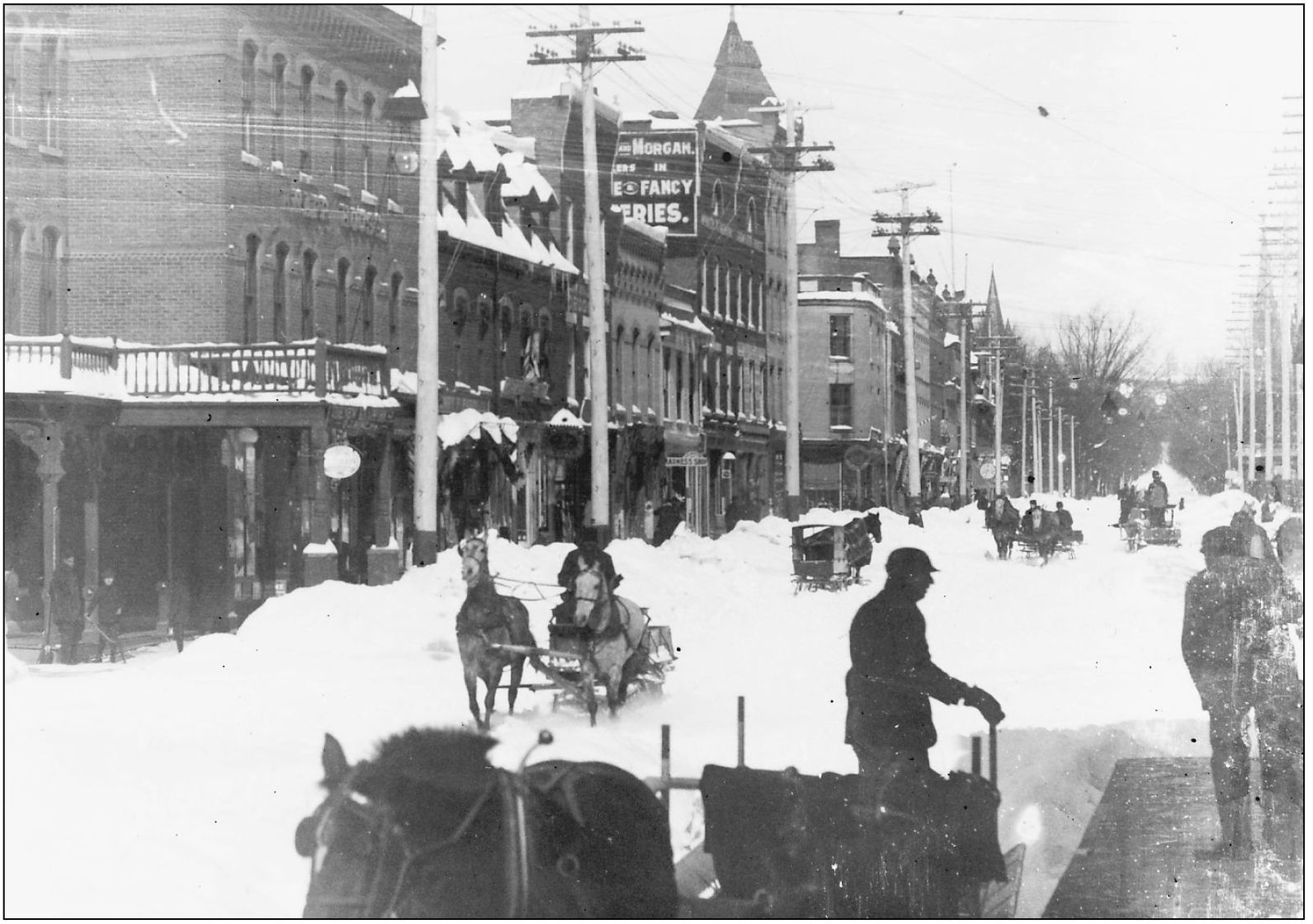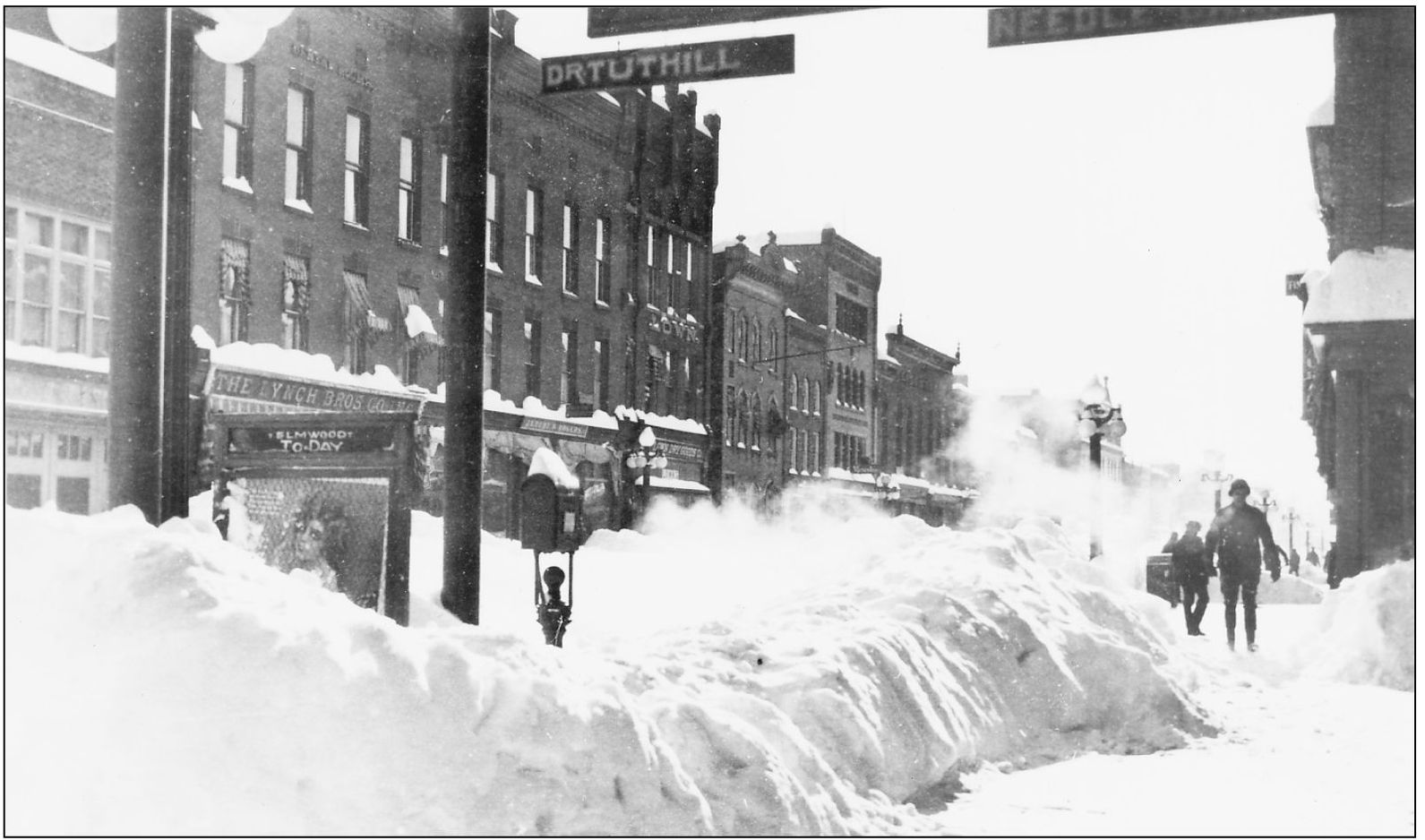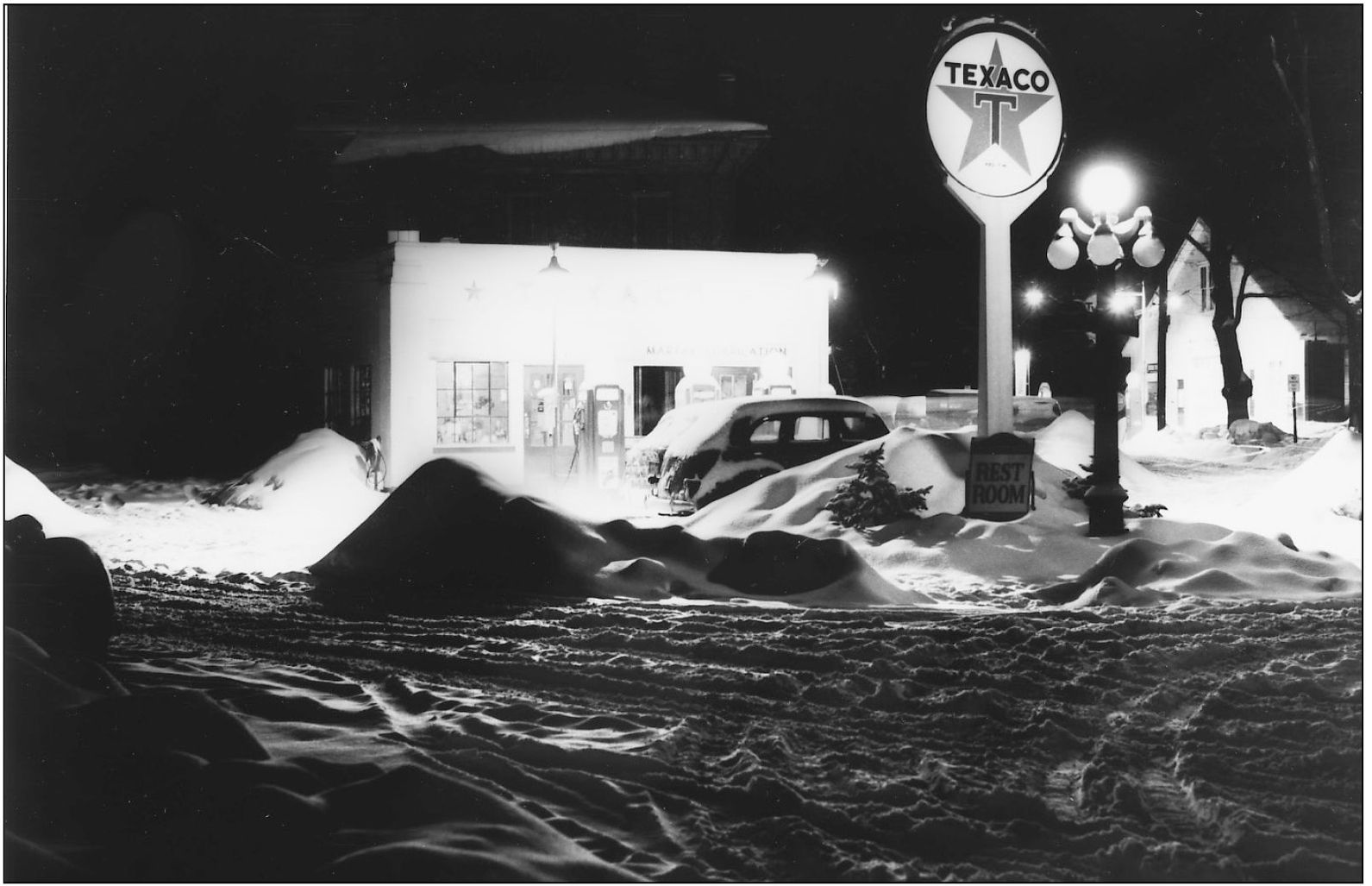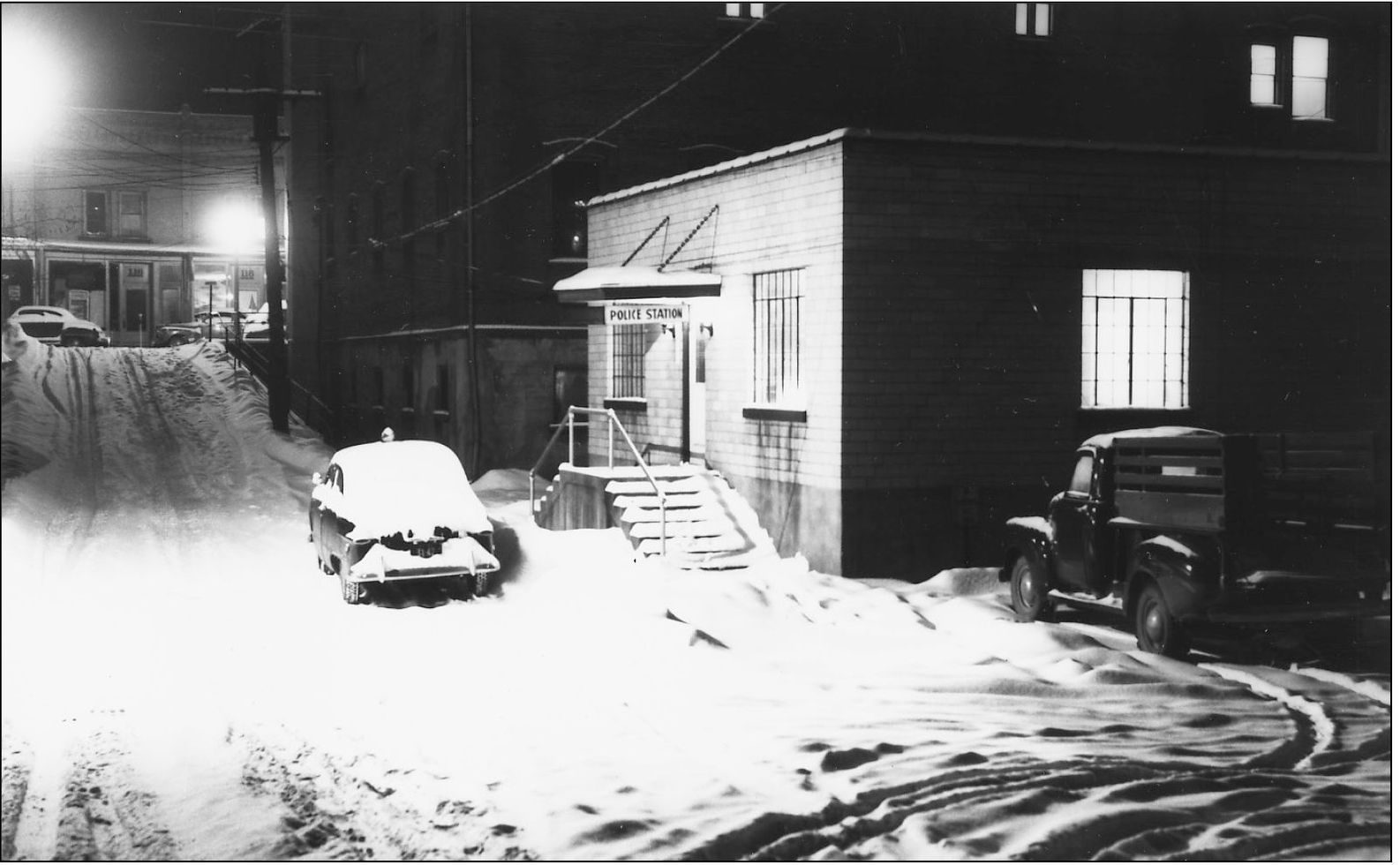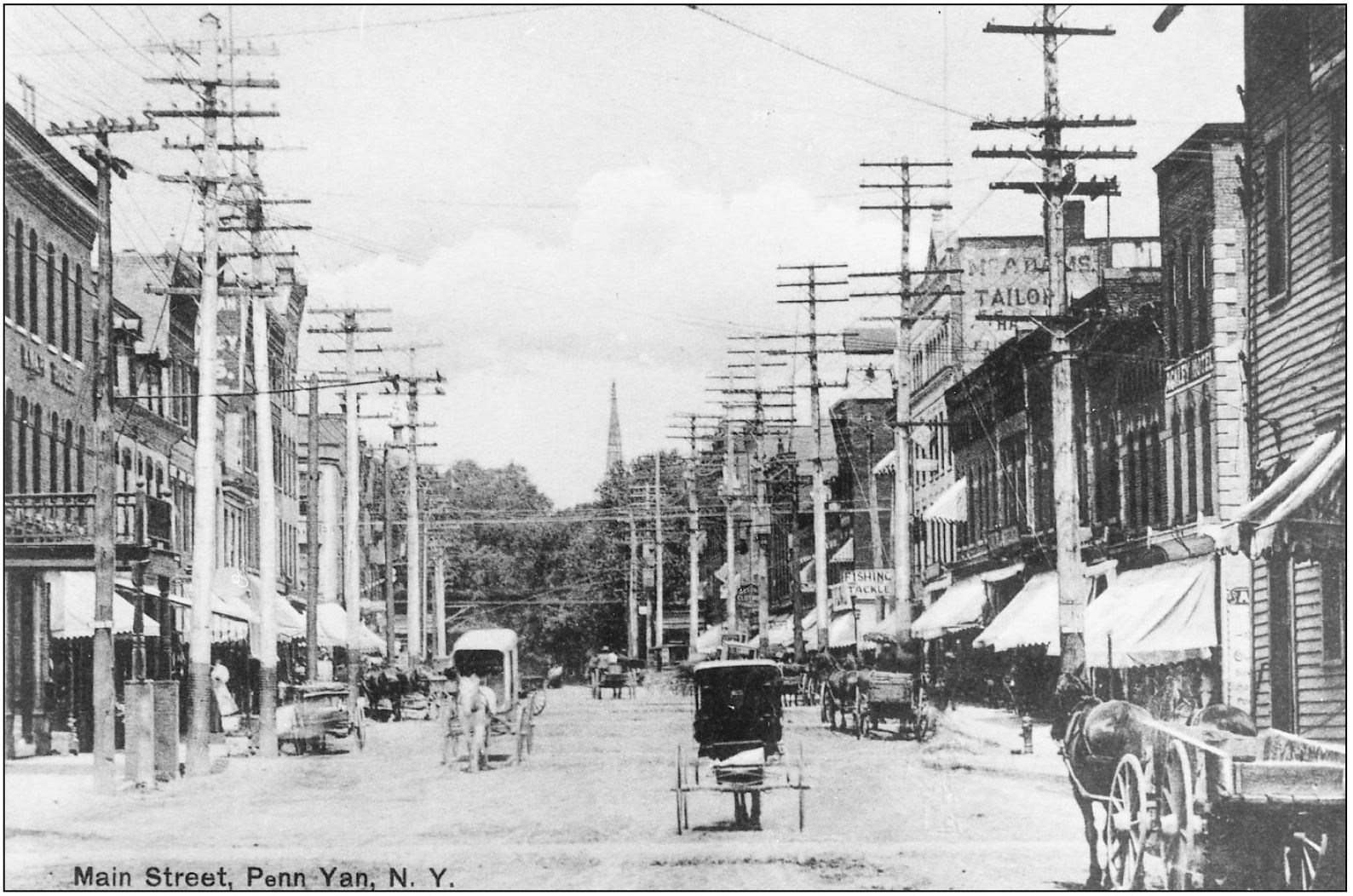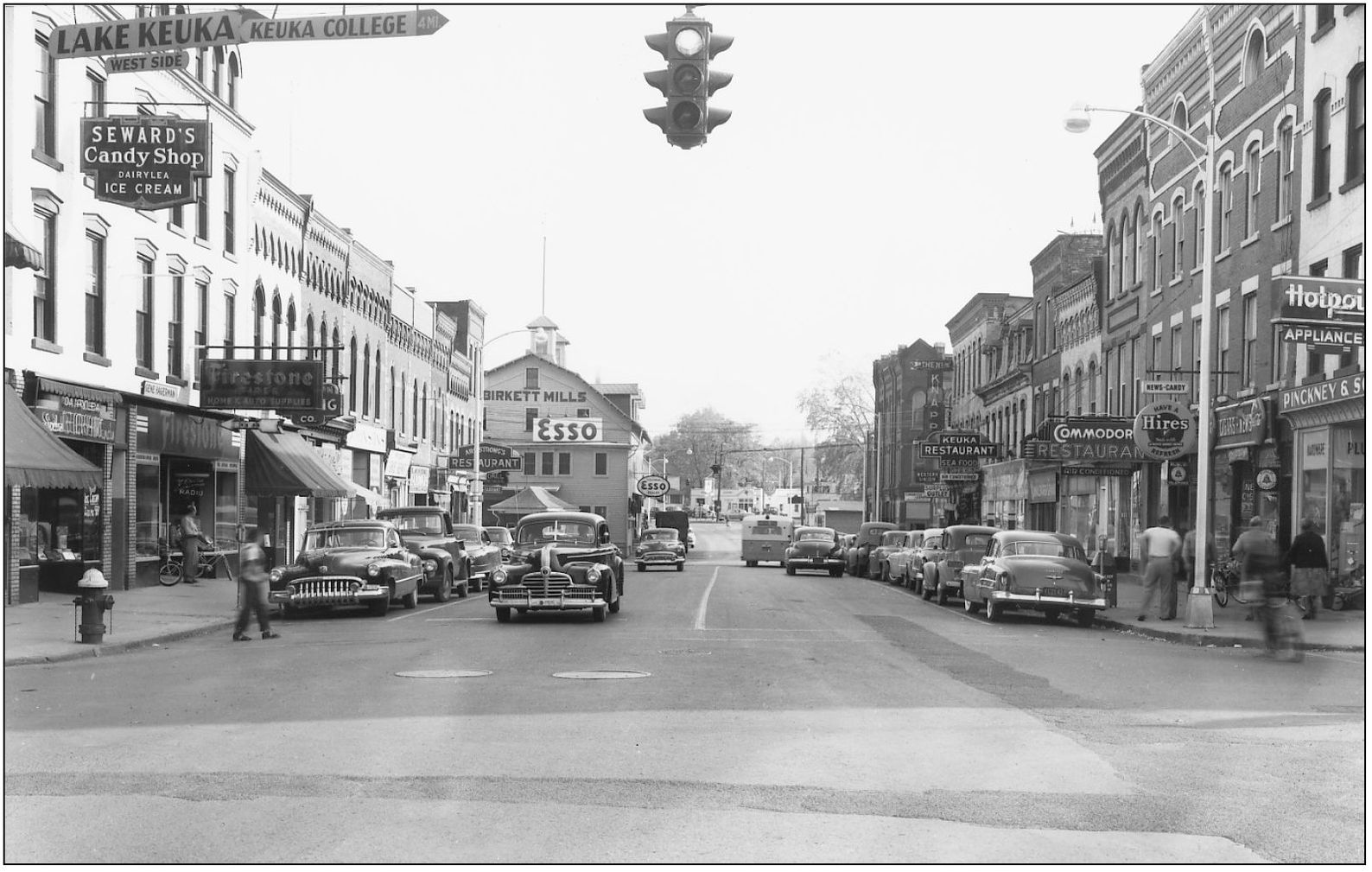One
Penn Yan
Penn Yan received its unique name in 1808 as a compromise between the founding factions: Penn was selected to honor the Pennsylvanians and Yan, the Yankees. Local legend has it that after this agreement was reached the entire population seated itself under a large oak and consumed copious amounts of malt liquor.
Many of the early settlers came to the area after the Revolutionary War. Soldiers who traveled through the Finger Lakes with the Clinton-Sullivan Expedition told others about the beautiful area. One large group came as followers of Jemima Wilkinson, a religious mystic, known as The Publick Universal Friend.
Penn Yan is located on the north end of the main branch of Keuka Lake, an important waterway that provided both transportation and power. Mills along the outlet from Keuka into Seneca Lake provided Penn Yan with much of its early commercial viability. The lake and the outlet supplied navigable waters to import raw materials, and export the mills production along with agricultural products.
The photograph above shows the east side of Penn Yans Main Street in 1858.
This silver albumen print was taken in 1870 from the yard of the Mansion House where the Knapp House now stands. The wooden bridge, replaced in 1884, has a sign relating the penalty for speeding. Note that the White Mill is set back farther from the road than the mill in the foreground. The carriage on Water Street is Bill Hittles hack. Upstream, to the right, is the wooden towpath bridge damaged by the spring floods.
The west side of Main Street in 1868 had wooden sidewalks and awnings. The Armstrong and Gage Hardware building was built in 1840, destroyed by fire in 1985, and then rebuilt. This has been the site of a hardware store continuously from 1862 until the present. In both this silver albumen print and the one above, a photographer in Penn Yan was enough of a curiosity to draw a crowd.
This silver albumen print probably dates to the 1850s. It shows Penn Yan from the east and was taken near what is now Hamilton Street. A number of substantial structures can be seen along Main Street and also in the Head Street area (now North Avenue), which was the site of the earliest village settlement.
An apple evaporator and a blacksmith shop on Seneca Street are shown here in the 1890s. This copy print was made from a small original photograph taken by an amateur photographer, probably Fred Amsbury, who worked in his family shop (shown at left in the photograph).
A circus parade on Main Street in the 1890s moves from the train to the fairgrounds, then located on Lake Street. This was not the most direct route, but one that afforded maximum exposure and the promotion needed to attract people to the circus. The Hertel on the awning on the right designates the shop of William H. Hertel, a wholesale and retail dealer in ales, wines, and liquors who always had fresh, cool lager on draft.
While this may look like the great blizzard of 1888, the picture must have been taken some time later because electricity did not arrive in Penn Yan until 1889. The photograph, made from a glass-plate negative, shows the view up Main Street from the dock at Russell and Birketts Mill. The sleigh in the center, going through the intersection, appears to be moving at a good pace.
Snow was not removed from Main Street in the 1930s as it is now. The snow banks became quite high and crossing the street was difficult. The sign in the left foreground showing what is playing at the Elmwood Today is half obscured by the snow banks.
Taking photographs at night or in snow is difficult, but the two photographs on this page by Bill Potts are more interesting because of the ambiance they convey. This one shows the intersection of Wagener and Water Streets. The gas station and the house behind it still exist, as does the building on the right, now McCredys Body Shop.
This 1950s photograph depicts the police station on Basin Street and the Masonic Temple behind it. The buildings across East Elm Street were torn down during a 1970s urban renewal project, but in the 1950s they housed Fosters Lunch and Lord Brothers, which served customers in Penn Yan for many years.
Viewing this scene of Main Street leaves little doubt about the wisdom of burying wires in the business district. Looking north from beside Russell and Birketts Mill, the steeple of the Presbyterian church points skyward at the center of this 1900 postcard.
Bill Potts took a series of before-and-after photographs for the Penn Yan Municipal Board when they changed the street lights in 1953. Few of the businesses in this picture remain today. Birkett Mills is still there, but the Esso sign and the gas pump awning, just visible over the cars on the left, are gone.

